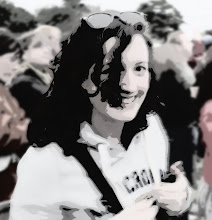I am planning a trip to Bunratty Folkpark, I will be talking to people about what they'd like to see or what they feel they would need from a 'context aware' mobile tour. I will organise a design workshop and interaction groups. I will also be coming up with scenarios and many storyboards throughout the design process.
The main design principles that are laid out in 'Designing Interactive Systems' that I will be keeping in mind when designing this are:
- Visibility - make sure the functions are visible and it is clear what the system is doing.
- Consistency - conceptual and physical consistency are important for ease of use
- Familiarity - the system should be designed so it is familiar to the user, language and metaphors are examples of this.
- Affordance - designing objects so that it is clear what they are to be used for, keeping in mind the properties things have and how people use them.
- Navigation - provide support on how to get around the system
- Control - make it clear who/what is in control and allow the user to take control.
- Feedback - the information from the system needs to be rapid so the user know what effects their actions have.
- Recovery - enable recovery from actions
- Contraints - provide constraints so user doesn't try to do things inappropriate that could lead to serious errors.
(Benyon et al., 2005)
Iterative Design Process
The design process I plan to use is an iterative process. This process is based on a cycle what begins with a prototyping, testing, analysing and redefined for the next cycle.
I hope to be able to go through two cycles of the iterative design, I'll have a better idea of if this is possible over the next couple of weeks.
Over the past few years I have learned that the iterative design process is highly regarded, as each time the cycle is repeated it is hoped that the usability will be improved and the designer will progressively develops solutions to the design.
The idea is that a prototype will be designed, a user will test it, the designer will fix the bugs/issues and the redefined prototype will be tested again.
Jakob Neilson has an good paper on iterative design, "Iterative User Interface Design". It discusses the iterative user interface design and some user tests, and measurements.
Scenarios
Throughout the design process I will be doing scenario building- coming up with stories about how visitors to Bunratty Folkpark will undertake activities in the Folkpark using the technology.
Scenarios in the design process are recommended here because "descriptions of people using technology are essential in discussing and analyzing how
the technology is (or could be) used to reshape their activities. A secondary advantage is
that scenario descriptions can be created before a system is built and its impacts felt."
They are also useful for brainstorming and coming up with as many possibilities and solutions
in the design. They can give the designer a better understanding of the current situation and
any difficulties in the situation. (Benyon et al., 2005).
the technology is (or could be) used to reshape their activities. A secondary advantage is
that scenario descriptions can be created before a system is built and its impacts felt."
They are also useful for brainstorming and coming up with as many possibilities and solutions
in the design. They can give the designer a better understanding of the current situation and
any difficulties in the situation. (Benyon et al., 2005).
User stories and their real world experiences will be a huge help in scenario building. This can be collected as videos, interviews, results from observations, pictures etc.
Conceptual Scenarios are more abstract than user stories. Common elements are found in the user stories, stories are examined and combined. It is useful for generating ideas and for understanding requirements for the future system.
Concept Scenarios are useful for prototyping and envisioning the design ideas. These scenarios are specific elaborations from the user stories and observations that are linked to the original scenario.
Use Cases
I will be evaluating evaluating how users interact with my prototypes by making Use Cases. Use Cases describe the interaction between people and devices. It describes what the system does, how the system is used and what people do with the system.
Task and functions have to be allocated to the use and results should be recorded. Design issues can be noted here. (Benyon et al., 2005)

0 comments:
Post a Comment